.
MetaMetaverse: digital art-based research on reflective approaches to the
metaverse
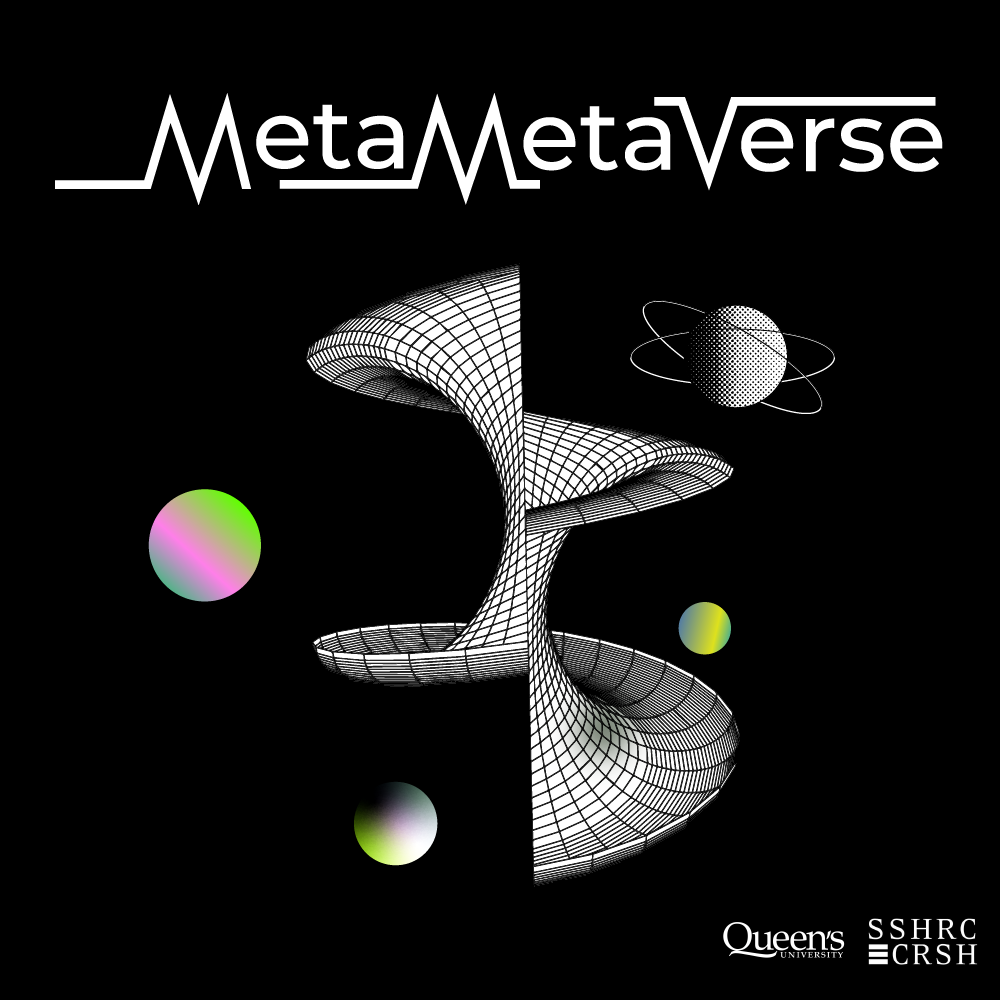
MetaMetaverse is a digital art-based research project exploring reflective approaches to the metaverse, funded by the Social Sciences and Humanities Research Council (SSHRC) in Canada. The term “metaverse” was first coined by American writer Neal Stephenson in 1992 to describe a sophisticated virtual world optimized for social interaction. However, it gained renewed attention in 2021 when Facebook rebranded itself as Meta. This strategic shift signaled Meta’s commitment to developing a digital ecosystem where individuals can connect and engage within immersive 3D virtual spaces, a trend further accelerated by the COVID-19 pandemic. Due to its broadly defined and futuristic nature, the concept of the metaverse has increasingly been associated with envisioning the immersive future of the internet. This vision integrates emerging technologies such as Extended Reality (XR), blockchain, Web 3.0, and more, aiming to create interconnected virtual environments. However, interest in the metaverse has encountered recent fluctuations within both industries and academia. Factors contributing to this include a gradual shift away from 3D virtual interactions in a post-pandemic world, heightened industry focus on advancing generative AI technologies, and ongoing uncertainties surrounding the practical implementation of the metaverse concept. These challenges suggest that the current iteration of the metaverse may be in a transitional phase, awaiting further technological advancements and conceptual clarity to fully realize its potential, or it may have been a temporary buzzword related to the COVID-19 pandemic. Amidst this uncertainty, it is crucial to reflect on the essence of the metaverse: what is the metaverse, what it means to us, why it is interesting (or not interesting), what underlying instincts or desires drive its exploration (or even unexploration), and what are profound ethical, philosophical, and political inquiries related to the metaverse. In the MetaMetaverse research-creation project, we aim to explore these questions through collaborative efforts with artists, technologists, and scholars. By harnessing the creative and analytical strengths of interdisciplinary collaboration, we aim to enhance our contextual and reflective understanding of the metaverse. Our findings will be presented through artworks and exhibitions that utilize metaverse-related technologies to provoke thought and engage with diverse audiences.
For more information about the research project and its outcomes, visit: https://www.research-practice.com/metametaverse
.
Designing Immersive Stories with Novice VR Creators: A Study of Autobiographical VR Storytelling During the COVID-19 Pandemic
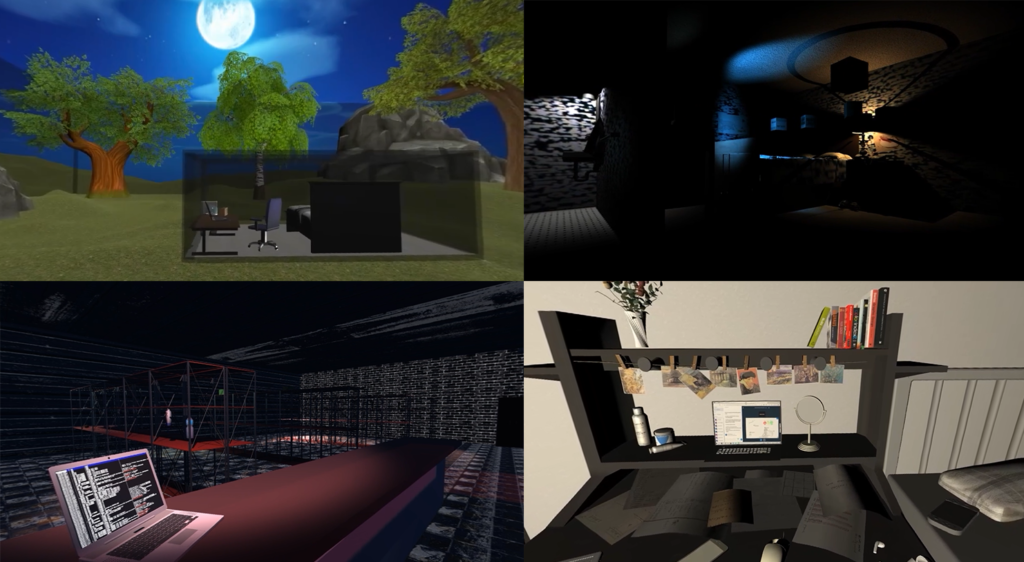
Virtual reality (VR) is increasingly being used as a tool for eliciting empathy and emotional identification in fact-based stories. However, it may not be clear whether VR stories authentically deliver the protagonists’ perspectives if the works are not created by or with the protagonists themselves. Therefore, it is crucial for the VR community to explore effective methods for democratizing VR storytelling, and to support novice VR designers in creating autobiographical stories. In this paper, we report findings from a collaborative design research project that aimed to create autobiographical stories with novice VR designers who lacked experience in VR storytelling. We collaborated with university students in Canada to design eight individual VR stories that expressed each student’s experiences of lockdown, during the early stages of the COVID-19 pandemic. We conducted interviews with the students to understand how VR contributed to conveying their individual experiences. Our findings demonstrate how immersive VR can be used as a meaningful tool for sharing autobiographical stories by delivering the character’s feelings, creating a sense of confinement and isolation, expressing inner worlds, and showing environmental details. Our discussion draws attention to the significance of careful camera positioning and movement in VR story design, the meaningful use of limited interaction and disorienting components, and the balance between spatial and temporal information in a three-dimensional environment. Our study highlights the potential of VR as an autobiographical storytelling tool and demonstrates how VR stories can be created through iterative collaboration between VR experts and novices.
.
Reflexive-vr.com: Reconfiguring a physical VR exhibition into an online virtual exhibition due to the COVID-19 pandemic

This paper reviews a virtual exhibition titled reflexive-vr.com. Initially planned as a public exhibition featuring cinematic VR works by media artist/filmmaker Sojung Bahng, however, due to restrictions imposed by the COVID-19 pandemic, a different curatorial approach was needed in order to reconfigure the original installation plan into an interactive online viewing experience. This reflective analysis explores the design strategies involved in this case and how the viewing experiences associated with the artistic intent of three VR artworks (Floating Walk, Anonymous and Sleeping Eyes) was supported by the exhibition’s translation from a gallery-based installation into an online virtual environment. We will address technical specifications, consider curatorial strategy and implications to narrative flow and phenomenological experience, and – while acknowledging present limitations – raise the potential for online exhibition formats to serve as a distinctive presentational mode in their own right for engaging viewers with VR works.
.
A comparative study of practice-based research and research-creation in media art: Comparing two doctoral studies in Australia and Canada
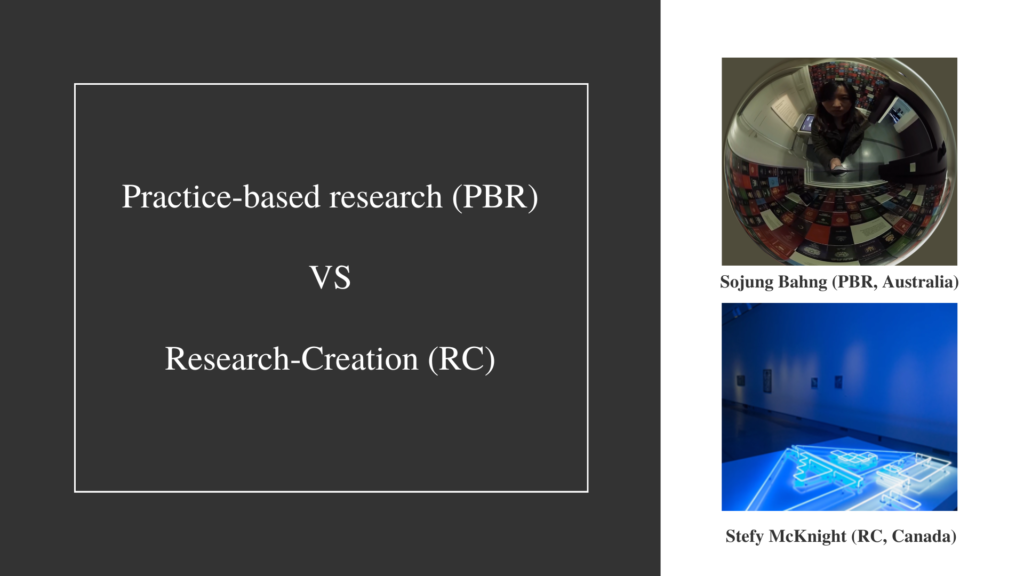
This paper examines the differences and similarities between practice-based research (PBR) and research-creation (RC) in media art. As case studies, two PhD research projects — one from Australia (Sojung Bahng, PBR) and the other from Canada (Stéphanie McKnight, RC) — are compared. The comparative analysis demonstrates that critical reflection and phenomenological awareness through creative practice are crucial in generating knowledge in both PBR and RC. Simultaneously, this study shows that research methods and approaches between PBR and RC differ due to different academic and socio-cultural factors. PBR’s main aim is to generate knowledge through practice in a broader sense, whereas RC, with its conceptual roots in fine arts, emphasizes social and community-based engagement.
.
Cinematic VR as a reflexive tool beyond empathy
This practice-based research explores the reflexive dimensions of cinematic virtual reality (VR) within intersubjective contexts beyond empathy. Many artists and filmmakers are embracing VR as a creative medium, attracted to the ways that cinematic VR can, for example, elicit emotional engagement and empathic identification. This, however, carries the potential risk of uncritical acceptance or witnessing another’s pain without self-critical awareness. While the reflexive dimensions of cinema and new media art have developed through Brechtian estrangement effects and avant-garde filmmaking techniques, the reflexivity of cinematic VR is yet to be understood sufficiently. Because VR is fundamentally an immersive medium, investigating reflexivity in VR carries the risk of breaking that immersion. The research argues that a VR experience is fundamentally reflexive in nature due to the limitations of immersive engagement, which derives from the technical limitations of the medium and the duality of virtual embodiment. Artists and creators can employ these constraints as estrangement effects that encourage the audience to actively “fill in the gaps” between their physical sensations and virtual perceptions. The practice-based research developed three cinematic VR projects that apply reflexive elements in qualitatively different ways: Floating Walk (360° video), Anonymous (interactive mobile VR) and Sleeping Eyes (interactive navigable VR). These creative works explore the potential of cinematic VR for eliciting embodied reflection. The projects are responses to alienation, disconnection and isolation; sociocultural issues which prompt the audience to engage in self-reflection in sociocultural contexts and consider how they connect with others. These artworks play on the different media constraints of VR technology as a cinematic medium by exploring different methods of storytelling, interaction and aesthetic techniques, in an effort to advance the language of this new medium.
.
Experiencing Narcolepsy Through the Duality of Virtual Embodiment.
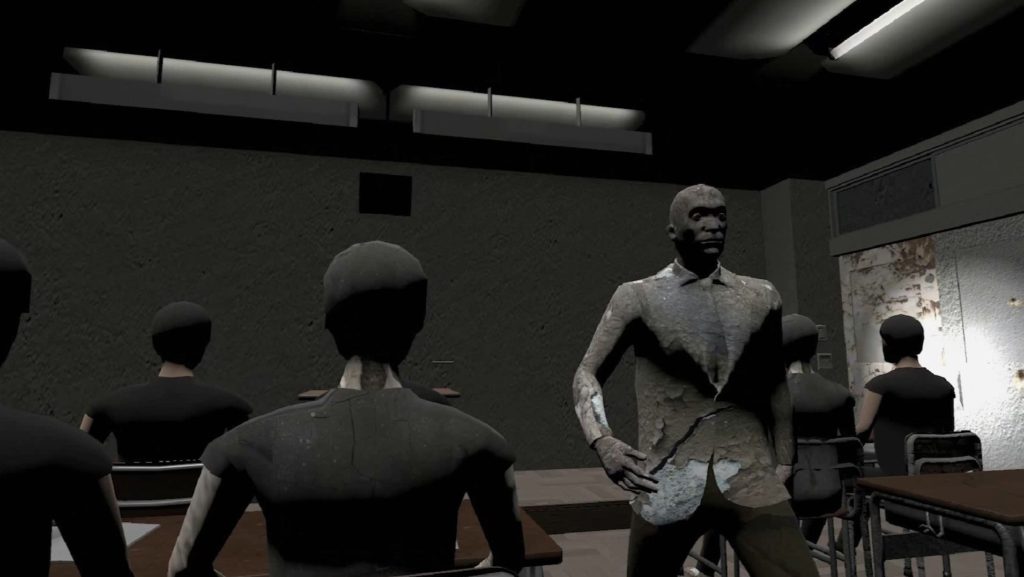
The aim of this art-based research is to explore the duality of embodiment and presence in virtual reality (VR) through a narrative about the South Korean narcoleptic artist, Sungeun Lee. Narcolepsy is a neurological disorder where a person falls asleep unexpectedly. A narcoleptic struggles with a blurred and unsure sense of self, as well as confusion between reality and dreaming. We used VR to simulate his traumatized dream world and symptoms of narcolepsy. However, we also investigated the fundamental duality of embodiment/disembodiment in the virtual space and its parallels in the dream world. A non-linear narrative and generative poetic aesthetics driven by biometric feedback were applied to represent a surreal and uncertain sense of self. Gesture-based navigable interaction was used to connect people with their physical bodies, the virtual environment, and Sungeun’s experiences.
.
VR Storytelling through alienation and reflexivity
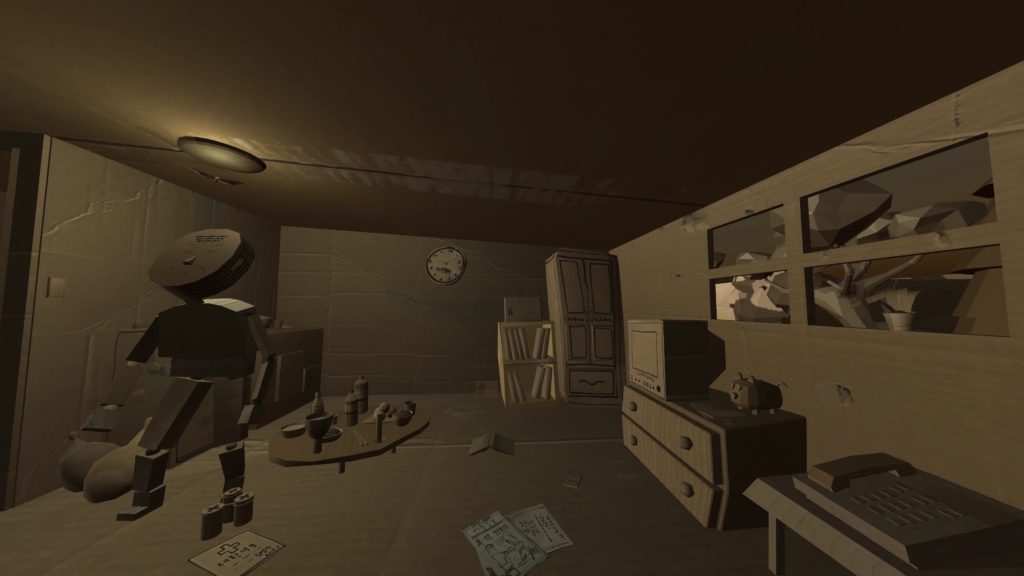
This research describes the reflexive dimensions of cinematic VR, using alienation and disembodiment as rhetorical devices. Cinematic VR currently focuses on immersive illusion rather than inducing self-awareness, but VR can also create reflexive contexts for eliciting self and social reflection. Anonymous is an interactive cinematic VR that explores solitude and mortality, specifically people living and dying alone. The work plays on the technical limitations of VR technology as a narrative medium to create a sense of disembodiment and alienation, eliciting embodied reflexivity.
.
SOMPLEXITY: the meeting of ‘some’and ‘complexity’
Sojung Bahng, Artenigne
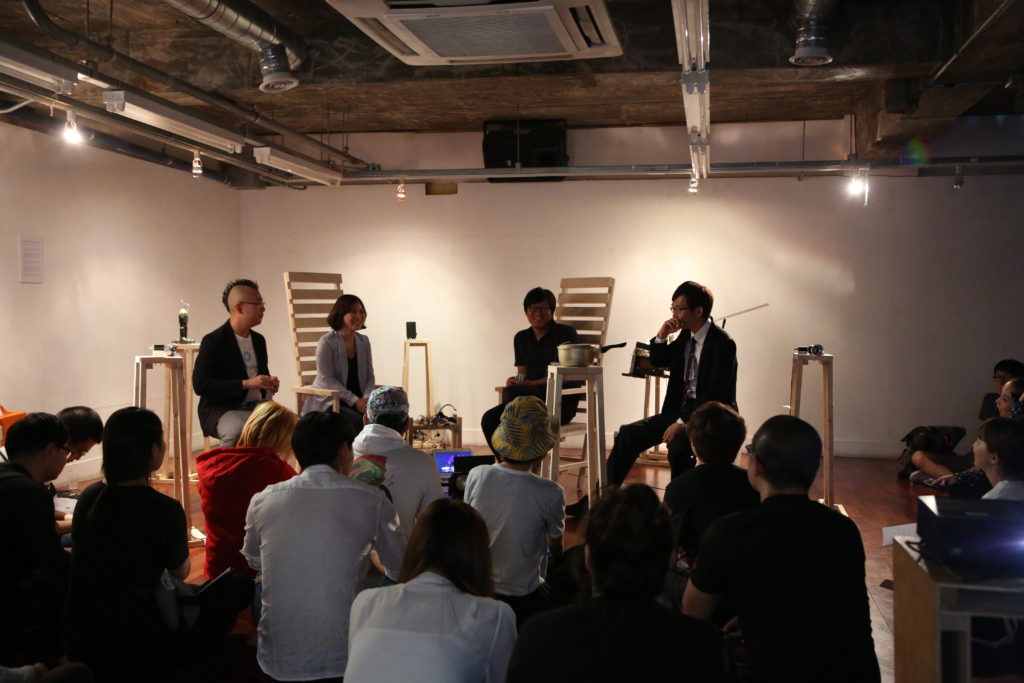
‘썸(some)’, a trendy word in Korea now, is an abbreviation of ‘썸씽 (something)’. It is widely used to describe a complicated or ambiguous state in a relationship. It may imply an anxiety of indeterminacy and a desire for mystery when people create the complex concept of love. Like animals, people are sexually attracted to each other, but, with their mental capabilities, they can transfer this sexual energy to affection or attachment. These fragility and beauty of human beings are what distinguished from animals.
In Korean society, as a whole, people constantly define their values and identity based on other people’s evaluation of them, so personal relationships have become a burden in this era of limitless competition. Therefore, people may categorize their undefinable relationship as ‘썸 (some)’ to justify their uncomfortable situations or feelings although they can naturally experience ‘something’ in everyday life. Can we capture the essence of ‘something’ as complex emotions that only human beings can create? ‘썸(some)’ can be explained as the map of connections that each individual’s memory reconstructs, the complex processes of brain activities or the psychophysiological response patterns in human connections.
<SOMPLEXITY> is an Art & Technology exhibition that represents the various layers of ‘썸(some)’ through the collaboration of art, technology and science. This exhibition presents the different significant moments individuals confront consciously and unconsciously in human relationships. <SOMPLEXITY> explores the features of ‘썸(some)’ in terms of ‘complexity’ – a term for describing a system that has many coaffecting variables that interact in diverse and unpredictable ways. The exhibition examines the chaotic process of forming relationships by combining various sciences and technologies such as neuroscience, new media and physics.
.
Generative spatial montage with multi-layered screens: A new non-linear cinema and media art
Sojung Bahng, Patrick Hutchings, Doowon Yoo, Chungkon Shi, Graham Wakefield
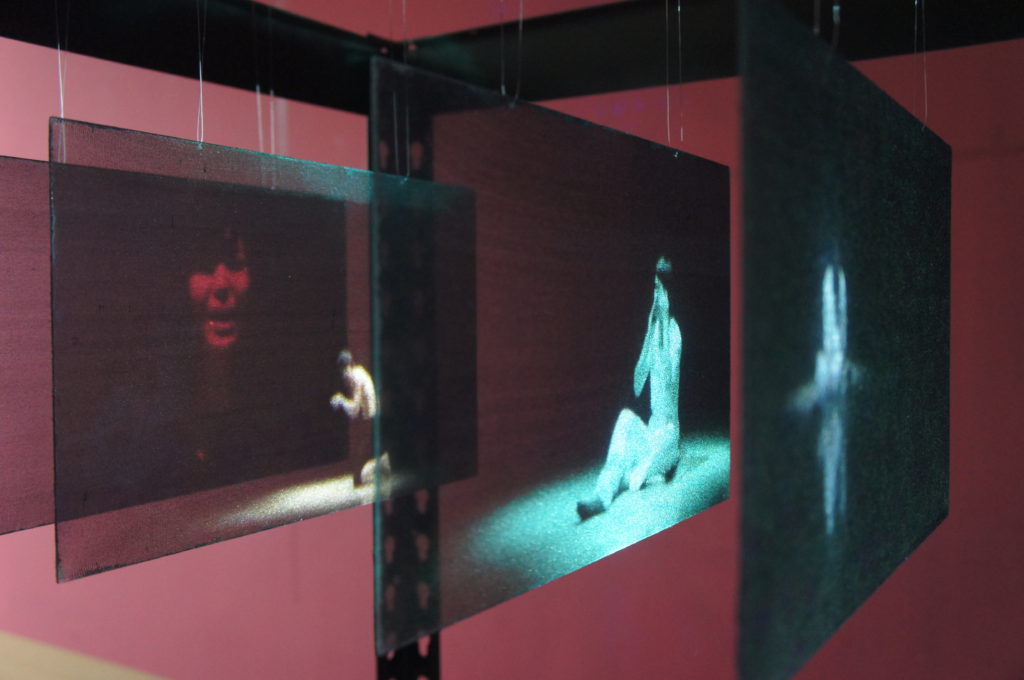
This study represents practice-based research into new non-linear cinema and media art that generatively selects from author-tagged shots in real-time, and renders them over four screens layered in physical space. The aesthetics of ‘multi-layered screen’ and ‘generative spatial montage’ were specified as a conceptual framework, and the main concept of this media is to create poetic and vertical montage. The four-screen architecture enables audiences to experience diverse images with single and simultaneous vision, thus overlapped images on different screens can be used as a new system of montage film composition with collage effects in depth. With multi-layered screens, montage is created within an overlapping space, without sight distraction, and the audience can appreciate the montage from different angles and positions in a real space to produce different layering effects not possible in traditional 2D cinema. Using a tag-based generative editing system helps in the construction of montage with diverse variations and metaphoric meaning. The generative editing system uses a dynamic Bayesian network constructed according to clip and timeline tagging. Audience members can actively contribute to the direction of the montage through a web interface, so the artwork creates different meanings by embracing the role of the audience in every screening. Timeline flow and authorial intents are not damaged due to these criteria, yet unexpected montage may arise from the randomized selections. A dance film ‘Poetry of Separation’ and a documentary film ‘Lost Fragments of Night’ were used to test the system and five expert interviews were conducted to evaluate the new media. The aesthetic concepts of the media find resonance with the newly designed display system.
.
Digital Love Letter: A handwriting based interface for non-instant digital Messenger
Sojung Bahng, Yoonji Song, Jaedong Kim

The instant messenger has developed as an important communication media platform. However, because of the nature of instant communication, instant messenger services place many limitations on communicating with nuance. We believe that the easy nature of digital communications tends to weaken serious aspects of personal communication such as patience and commitment. On the basis of critical perspectives, we designed the digital messenger ‘Digital Love Letter’ (DLL)’: a mobile messenger in which the expressive process of interaction is more important than the final output. The main concept of DLL is to share the process of communication using a non-instantaneous and non-multitasking interface so that users can share their time with some similar nuances to face-to-face communication. Both writing and reading messages require concentrated attention. Thus, this paper suggests a new system of digital messenger, that is also a new method of computer-mediated communication (CMC).
.
Korean Cultural Climate in the 1990s through the Lens of TV Sitcoms
(Cultural Studies Research, 2011-2013)
Sojung Bahng
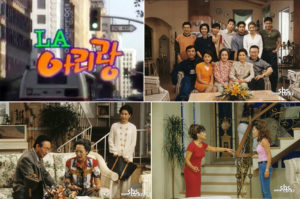
In this study, the Korean cultural climate in the 1990s is analyzed through the popular television sitcoms, ‘LA Arirang’, ‘Three Guys and Three Girls’ and ‘Sunpung Obstetrics & Gynecology Clinic’. A situation comedy or a ‘sitcom’ refers to a theatre of situations. The genre uses the interweaving of humour into the structure of everyday life to establish its comedic effect and narrative. Since humour itself is an integral part of any culture, its use in the context of daily life stories can be particularly insightful. Sitcoms can then be used as tools to explore and reveal the nature of society in the times they were made in.
The 1990s was a period of significant social change in Korean society and also signalled the introduction of the sitcom genre to Korean television. During this time, Korea was going through a transitional period with the growth of chaotic globalization and civilianization. The democratization era had started, and neo-liberal policies claiming to advocate globalization began to be implemented. This resulted in the emergence of a new generation who accepted consumer culture with little critical awareness and the collapse of the economy following over-stimulated economic growth.
The sitcoms ‘LA Arirang’, ‘Three Guys and Three Girls’ and ‘Sunpung Obstetrics & Gynecology Clinic’ portrayed the historical characteristics of the 1990s. All the three works showed various aspects of human relationships against the backdrop of the rapid social changes in the 1990s. Conflicts, developed from the coexistence between the old generation and the new generation, were revealed, and an idealized vision of Westernization and Americanization were shown. However, these works imply different cultural climates, which depend on the perspectives of different generations and the historical events leading up to them.
Previous studies into 90s culture and sitcoms have focused on internal elements of specific programs. Sitcoms have often been viewed as being conservative because their propensity towards happy endings can limit their potential for building any conclusion that challenged the status quo. Therefore, there has been a tendency for sitcoms to be evaluated negatively. By studying sitcoms for their potential as a new paradigm for analyzing the times in which they were made, a new appreciation can be gained for their ability to reveal new things about culture and society.
